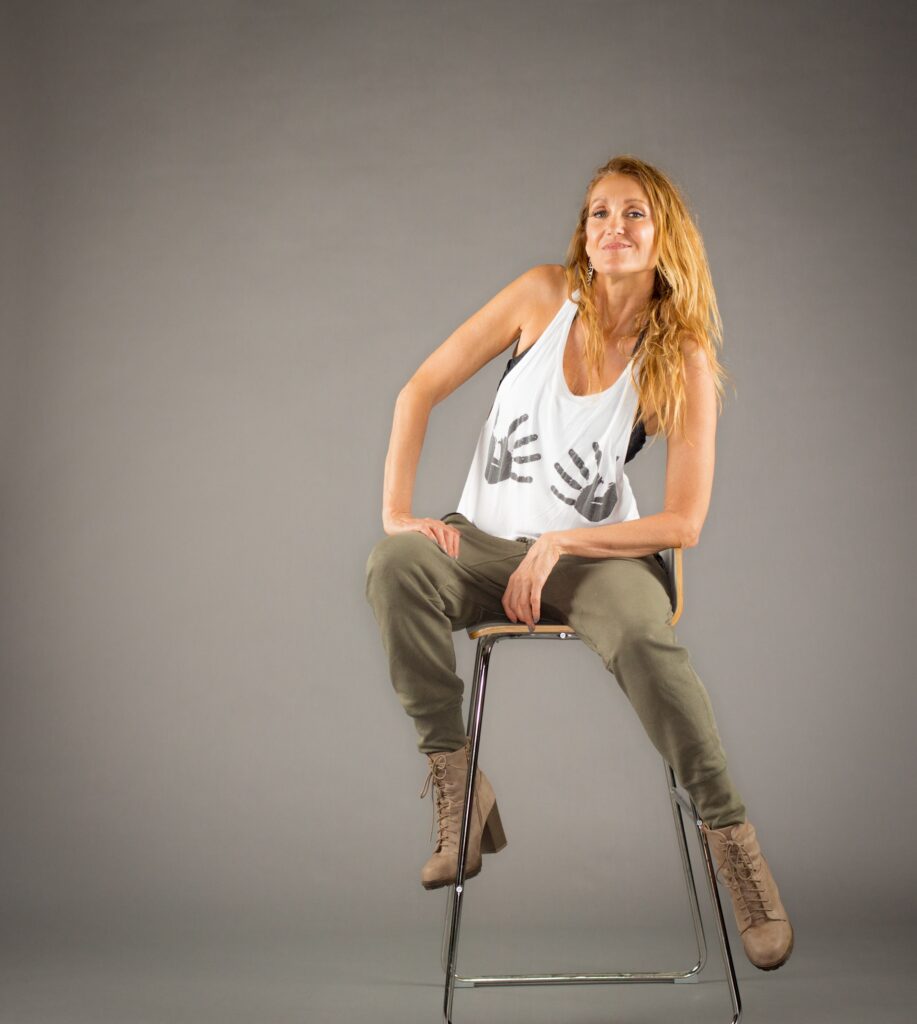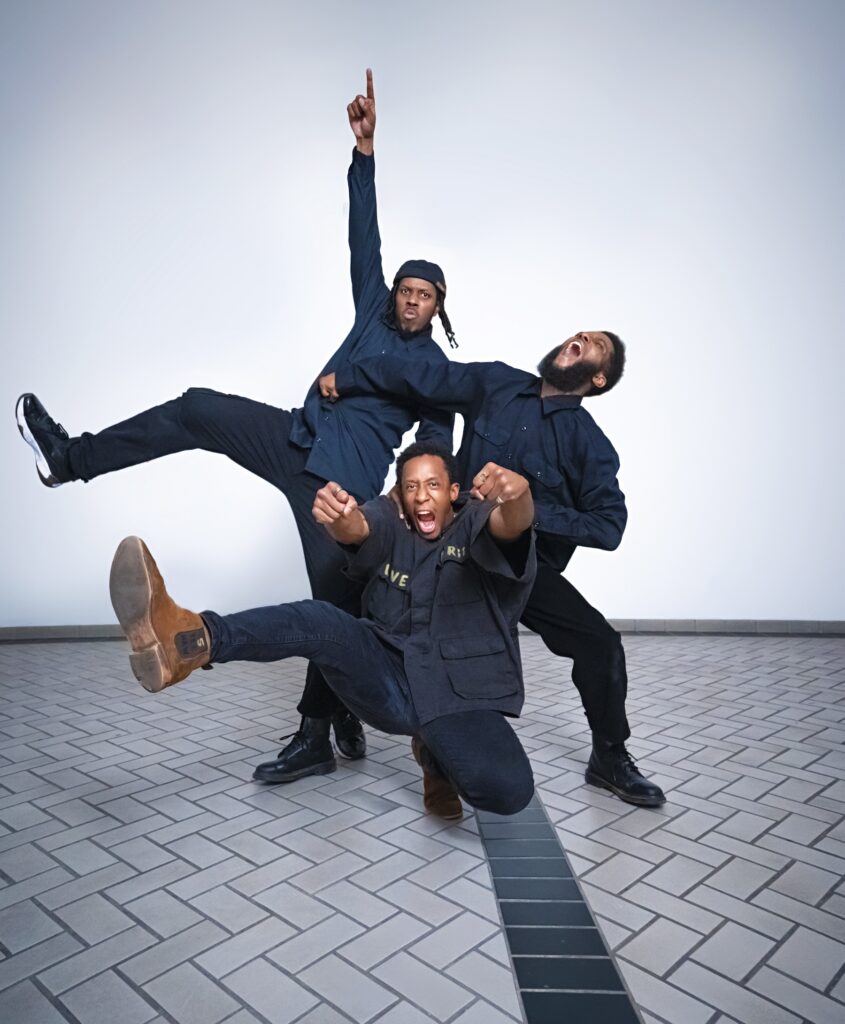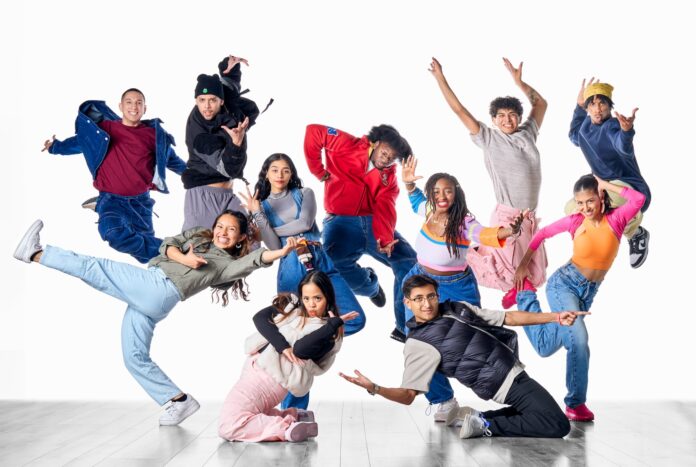Twenty-six years ago, choreographer, teacher, and dancer Micaya founded the SF International Hip Hop DanceFest (SFIHHDF, Sat/9 and Sun/10, Palace of Fine Arts, SF). When I ask what inspired her to expand from the smaller shows she had been producing, she says simply, “I needed a bigger venue.” So she reached out to Theater Artaud (now known as Z Space) to see if they could help. She says, “Up until that point hip-hop was mostly only in competitions or night clubs where they would stick you in a closet for a dressing room.” She remembers then Theater Artaud director Kim Cook suggesting that she develop a festival. “So I decided, OK let’s try this and we’ll see how it goes,” says Micaya. And the rest, as they say, is history.
For those 26 consecutive seasons, including two online shows during the pandemic, Micaya has been the SFIHHDF producer, promoter, travel manager, spokesperson, emcee, poster hanger, even plumber when the occasional toilet gets clogged. She does it all while remaining deeply committed to producing high quality performance experiences that honor the artists and put their artistry front and center. The DanceFest—one show this Saturday and two shows Sunday—is the annual global convergence of hip-hop dance artistry and the only festival of its kind centering hip-hop dance in a non-competitive setting.
“Putting this year’s festival together was harder than usual because so many legendary people applied,” Micaya says, noting that she received 113 applications. “I had to email folks to tell them that I just couldn’t fit them into the program. I’m sensitive and it hurt my heart to do that.” Performing this year are artists from Montreal, Paris, Detroit, Milwaukee, Los Angeles, Vacaville, San Mateo, and San Carlos, featuring works drawing from hip-hop, krumping, dancehall, popping, locking, waacking, house, and jit, in addition to other dance styles.

Sitting at her desk in front of a wall literally crammed with posters from each year of the DanceFest, Micaya tells me that people are surprised about her production standards. “If I was SFJAZZ, no one would be surprised that I was paying to bring artists here,” she notes. Despite being around for over five decades, however, hip-hop still struggles to be perceived as art. Micaya explains, “Some of the competitions are really geared toward young folks who usually have to pay to enter.” These young crews “want bragging rights and so they are motivated. By contrast, the SFIHHDF artists are seasoned professionals, folks who have honed their craft and people who are creating art.”
One such artist, Leigh Foaad aka Breeze-Lee, co-founder of Versa-Style Street Dance Company based in Los Angeles, explains that a crew is generally a gathering of dancers that practice maybe once or twice a week, freestyling and building routines for occasional competitions. By contrast, he says, “A dance company, to me, means two to three rehearsals a week, structured time, and paying artists for rehearsals and gigs or both.” Inspired by their experience in the DanceFest, Versa-Style made the transition from crew to company in 2013 and is now known for their full-length productions and international performances.
“When we applied, Micaya said she was going to challenge and push us. Prior to that we had been doing showcases, but we felt that the opportunity to perform in a theater in San Francisco was important.” He adds, “Many street dancers don’t get this opportunity, usually performing one-off gigs that often don’t go farther than their own communities.” He tells me the DanceFest has generational impact, referring to himself as a “proud papa” as he anticipates the performance of Versa-Style Legacy, Versa-Style’s youth company led by Ernesto Galarza, at this year’s DanceFest.
LA-based Dallas native Darrel “Friidom” Dunn is another artist pushing beyond what audiences might typically expect on a hip-hop program. Known for having pioneered a distinctive style of movement called “Epiic,” which integrates elements of krump, street styles, afrofuturism, and orchestral conductor gestures, he will be performing a solo work entitled, “The Way.” He describes the dance as, “Near and dear to me because it represents someone who has passed on or is struggling with something deep in their life. It’s like a plea for one more chance, a plea to god, maybe.”
This is Friidom’s second year performing in the DanceFest. He says, “The hospitality is phenomenal. It’s very communal. It’s not very often that a big production like this has a lot of community and not a lot of red tape. I’m jazzed for the whole thing.”

Micaya shares that she would love to extend the DanceFest from one to two weekends and double the number of companies from 10 to 20, adding master classes and workshops, but that right now the priority is to use any extra resources to take care of the artists. “Every year that I’ve even gotten any more money, I’ve always given the dancers a little more. Even if it’s just pizza every night, picking them up from the airport, or a massage therapist backstage. It’s important to me,” she says. “I’m not a producer. I’m a dance teacher and a choreographer, and I want to treat them the way I want to be treated. They come across oceans to be with each other. It really is an international community,” she says.
“It’s not just a theater experience but a big community and family experience for a full weekend,” adds Breeze-Lee. “Micaya set the standard years and years ago. She comes from a humble state to celebrate all of us and I see her light up. She’s a beacon of light for the hip-hop community and audience members.”
In 1987 Micaya came to San Francisco where she started learning Haitian and Brazilian dance, having previously studied west coast African dance, jazz, ballet and modern in Atlanta. She recalls starting with hip-hop in the 1990s. “I was a dancer’s dancer because I just wanted to do it all. I loved the hydraulics and groundedness of hip-hop and so I took to it right away.” Eventually she started choreographing and that’s when she knew she had found her true passion. She says, “When I got my first job as a choreographer, every hair on my body went up and I realized, this is what I want to do!‘“
Asked if the Bay Area is famous for any particular hip-hop dance styles, she says, “Bugaloo, strutting, turf are all Bay Area specific dances that I’ve been lucky to learn about from the OGs and legends of this work. I am a guest in this culture. All of these artists have their own truth. I am honored to be a part of this culture. I didn’t originate it. I have done my best to bring respect and funding to dancers from all over the world, but I don’t claim ownership of any of it.”
This year’s DanceFest is full of variety. “It’s going to be hard not to feel high energy,” laughs Micaya. In addition to US companies, applications came in this year from Poland, Colombia, China, Brazil, Germany, and beyond “Most are seasoned professionals and GOATs and I’m absolutely honored that they apply,” she adds.
In addition to Friidom and Versa-Style, the artists on the program include House of Jit, a collective group of artists specializing in Detroit’s footwork style known as jit. Founded in 2019, House of Jit has been featured widely, including on So You Think You Can Dance and in Forbes Magazine. Audiences will experience house, waacking, and locking In Free Palestine, as San Mateo, CA dance company Str8jacket pays homage to the transformative history of American club and street styles in a call for solidarity, resistance and resilience against globalized colonial occupation.
Also performing are AMS (Andy Michel Shadari) from Montreal, the all-female company Odasy from Paris, France, Water Street Dance Milwaukee, and Bay Area companies Bliss Dance Company from Vacaville and Tribe Crew from San Carlos.
“It’s going to be an important weekend after the election, no matter what happens,” Micaya says. “It’s going to be a healing place to be.” She recalls what it was like to produce the DanceFest following the 2016 election. “I taught one class and in my drive to go teach another, I heard who had won the presidential election and I was in complete sadness.” She figured folks wouldn’t come to class that night, but instead a lot of people did. “I had to suspend my own sadness and give them what they needed. They needed to dance.” Later that night at the tech rehearsal for the DanceFest, she remembers, “I was around iconic artists, art and dance-makers, and it made me believe that I could make it. I feel like this year will be celebratory.”
Like every year, the DanceFest offers something for everyone. In addition to three shows which typically sell out, the DanceFest also features a Soul Train-style dance competition on opening night, a DJ-ed after party on closing night, and the highly popular Kids Freestyle Onstage Session following the Sunday November 10 matinee. “One year I tried a thing where I invited all the kids in the house to go out to the lobby to freestyle,” Micaya recalls.
“They literally flooded down the aisles to get to the lobby. So after that we decided to do it on stage. It’s hard not to love it. The kids are so excited and want to try everything. Then they get pooped and their parents take them home. It’s one of my favorite things.” All of these extras are included in the price of a ticket.
Asked how she imagines the future of the Dance Fest, Micaya says simply, “As long as it continues to thrive I’m honored to be a part of it.”
26TH SF INTERNATIONAL HIP HOP DANCEFEST Sat/9 at 7pm and Sun/10 at noon and 5pm. Tickets and more information here.




